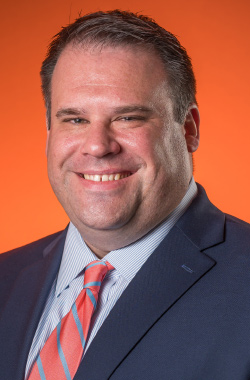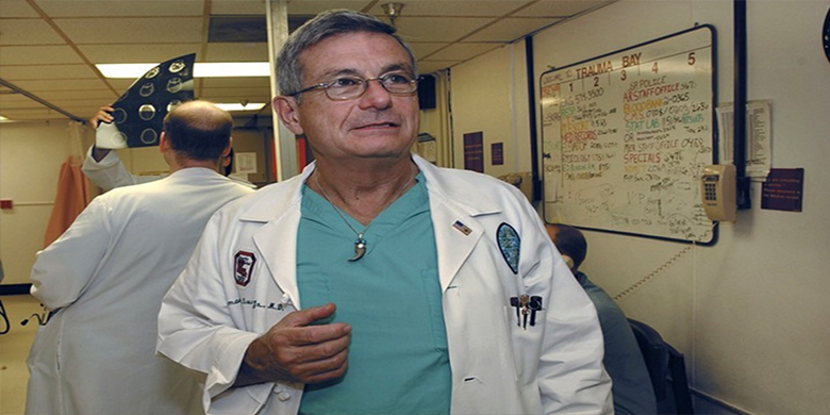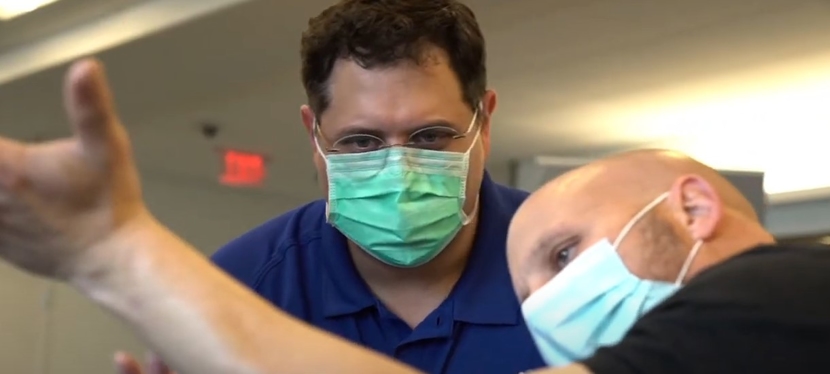Preventing harm from odorless gas during winter
- Category: Living Well
- Posted On:
- Written By: Jeffrey Elder, MD

Louisiana weather can be unpredictable. We may experience every season all in one week. With each season we always proceed with certain safety measures such as staying hydrated and wearing sunscreen when it is hot outside or how to keep your food safe after a hurricane.
This winter, our temperatures have been 70 degrees Fahrenheit one day and 40 degrees Fahrenheit the next. As we experience chilly and cold temperatures, we use various items to keep ourselves warm such as heaters in our homes. Heating systems are a great way to warm our homes but can, unfortunately, be unsafe if you aren’t careful.
During the cold winter months, there is an increased risk of carbon monoxide poisoning due to heating systems. Carbon monoxide is an odorless and colorless gas that can kill without warning. It can’t be seen, smelled, or heard.
You can prevent carbon monoxide exposure by:
- Installing a carbon monoxide detector. A carbon monoxide detector is the only way can you detect carbon monoxide in your home.
- Have your heating system, water heater, and any other gas, oil, or coal-burning appliances serviced by a technician as recommended by the Center for Disease Control and Prevention.
- Make sure your fireplace is vented.
- Not heating your home with your oven. Gas and electric ovens can be dangerous.
- Not running your car inside your garage even with the door open.
Unvented space heaters in your home are a common source of carbon monoxide. A space heater can use up much of the oxygen in the room, which can be deadly. Do not sleep at night with your space heater on and keep your heater away from beds as it is a fire hazard. Make sure that when you do use your heater that it is running properly and to not use it for long periods of time.
Symptoms of carbon monoxide poisoning
The most common symptoms of carbon monoxide poisoning include:
- Headache
- Dizziness
- Weakness
- Nausea and vomiting
- Rapid heartbeat
- Shortness of breath
- Seizures
- Chest pain
- Cardiac arrest
- Loss of hearing
- Blurry vision
- Disorientation
- Loss of consciousness or coma
- Respiratory failure
- Death
If you are experiencing any of these symptoms, please leave the area that you are in and find fresh air. If safely possible, turn off the source of the carbon monoxide before leaving. Call 911 or your local EMS to assist you.
If any of your loved ones have stopped breathing start CPR until they are able to breathe on their own. If you are nervous about performing CPR because of COVID-19, it is at your discretion to perform or not perform mouth-to-mouth breaths. If you choose to do breaths, you can use a barrier such as a pocket mask. Hands-only CPR can also be done until help arrives. First, call 911 and then proceed to push hard and fast in the center of the person’s chest. If possible, wear a mask and gloves while you are doing chest compressions and wash your hands with soap and water as soon as help arrives.
A healthcare provider can provide a carbon monoxide diagnosis. If you’ve been exposed to carbon monoxide your treatment needs to start as soon as possible. Treatment can include oxygen therapy where your healthcare provider will place an oxygen mask over your nose and mouth and have you inhale.
If you are experiencing a medical emergency and in need of immediate care please call 911 or visit our 24-hour Emergency Room.

Dr. Jeffrey Elder is a Clinical Associate Professor of Medicine in the Section of Emergency Medicine at LSU Health Sciences Center in New Orleans and serves as the Co-Director of the Division of EMS and Disaster Medicine. He is the Medical Director for Emergency Management at University Medical Center and LCMC Health. He is the EMS Medical Director for St. Tammany Fire District No. 1 (Slidell Fire), serves as the Chairman of the Louisiana Emergency Medical Services Certification Commission, and is a member of the board of directors for the National Registry of EMTs.


